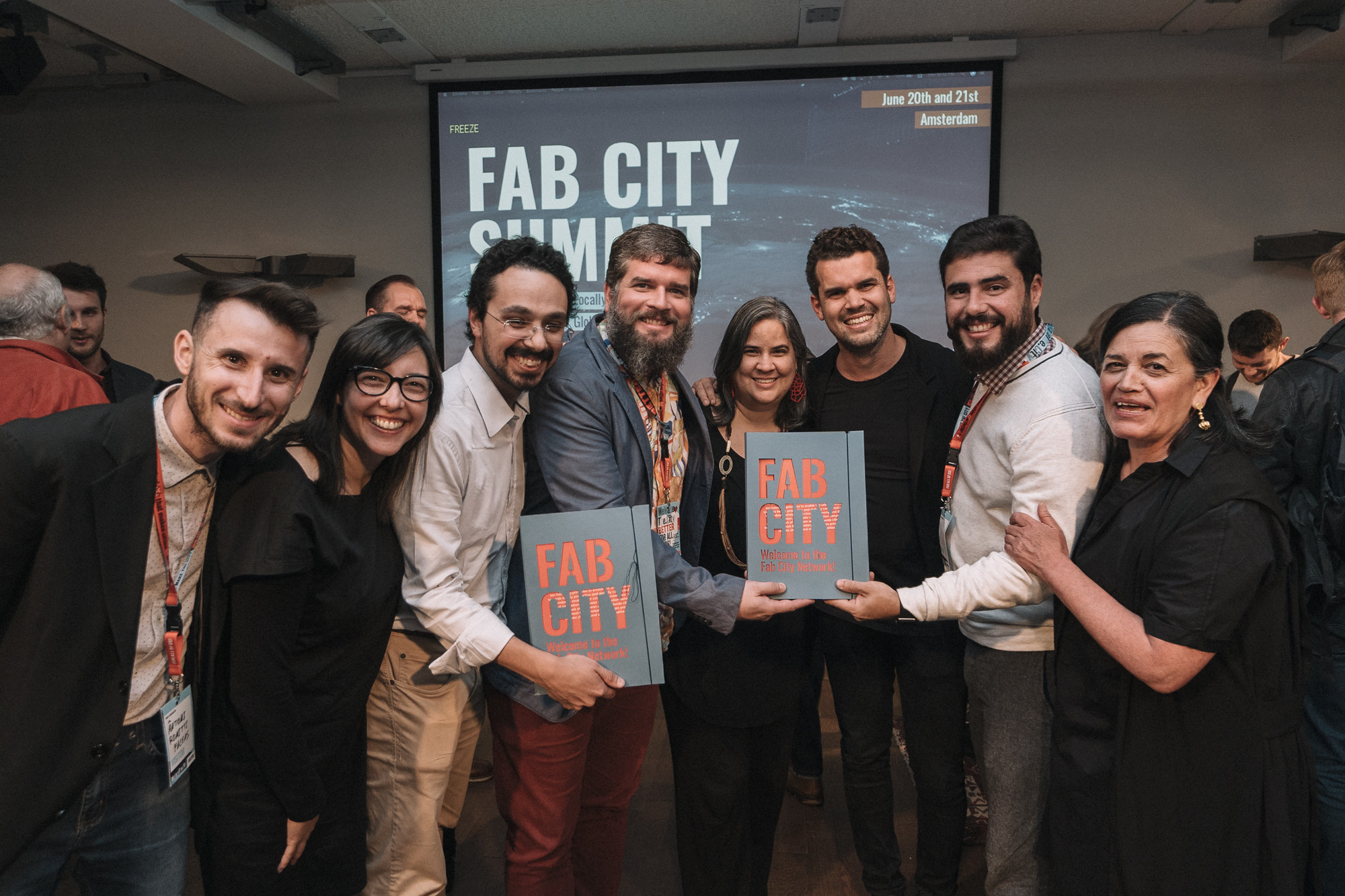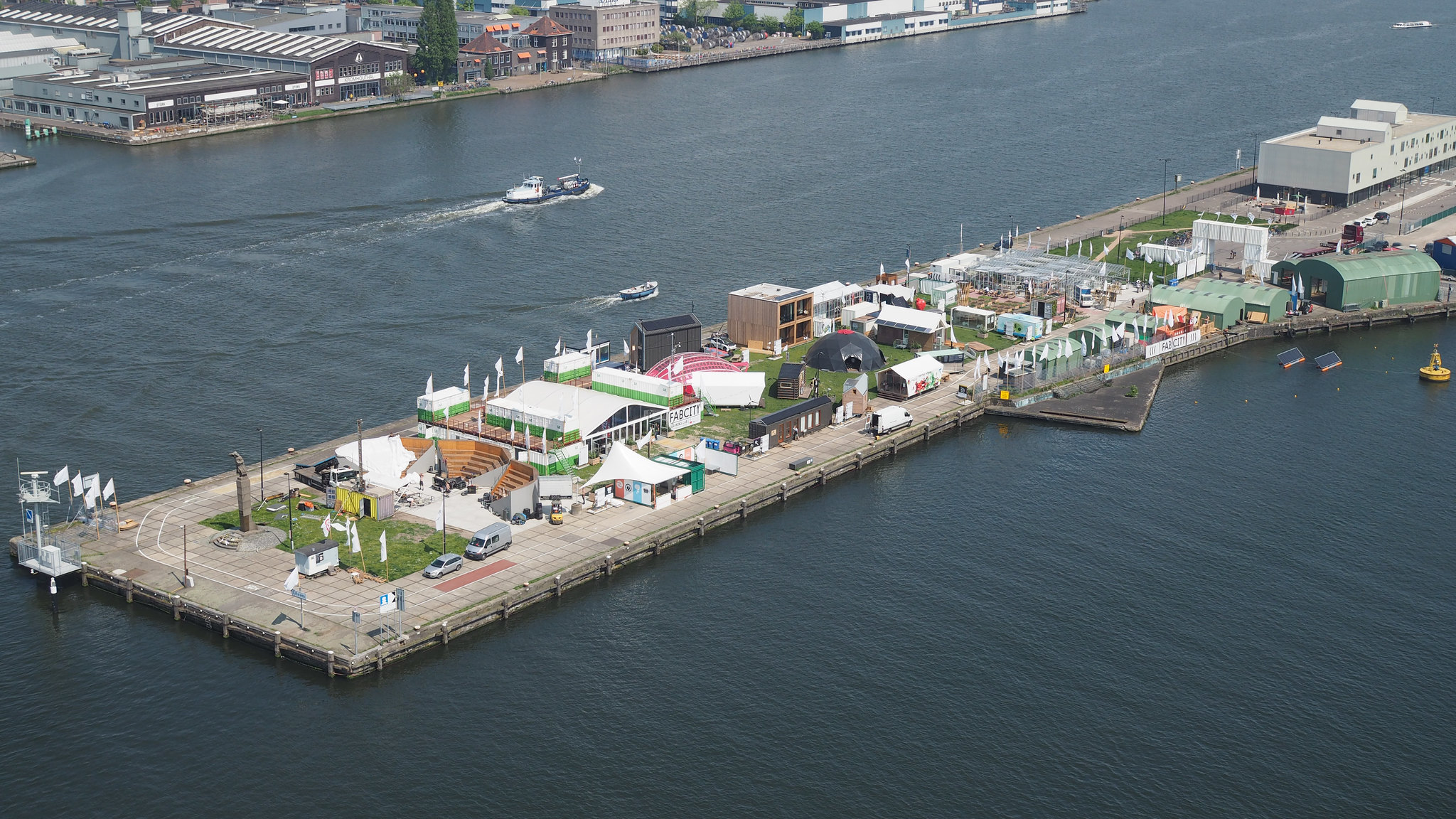Thessaloniki gets ready for its metro launch in November
The underground rapid transit lines have been under construction for almost two decades due to various project delays
 TheMayor.EU logo
TheMayor.EU logo Interview with Outreach and Programs Coordinator for Fab City Foundation
Fab City is a global initiative to help cities produce their own goods and services. Facilitated by the Fab City Foundation, a global network of 38 cities that exchange knowledge and share common digital resources to accelerate local solutions for circular and productive systems. A collective of experts help mentor and advise the cities in annual programming by focusing on energy, food and materials.
Kate Armstrong leads Outreach and Programs at the Management Board of the Fab City Foundation, and in her capacity as Design and Communications Lead at Fab Lab Barcelona, is аlso a coordinator of the Creative Europe-funded Distributed Design platform. She additionally oversees the communication and dissemination in multiple European projects for systemic and city design.
Fab City aims to take a systems design approach to recalibrate our global production and consumption systems. It supports the local supply and production of food, energy and materials in cities and their bioregions through bottom-up, top-down methodologies.
It started in 2014, when the then mayor of Barcelona challenged cities to produce everything they consume by 2054 to shift beyond the industrial paradigm of Product-in Trash-out, and enable the return of manufacture to cities supported by a Data-in Data-out urban model.
Building on the global network of Fab Labs, this has since grown into a global initiative, which comprises a Network of 38 cities, a core Collective and is governed by a foundation. We are working to make locally productive, globally connected cities and citizens.
Fab City is driven by the potential of bottom-up, top-down action. We visualise this through the Fab City Strata. A strategic model, it identifies seven distinct, but interconnected layers of intervention that together can implement situated, circular practices in cities and territories, whilst enabling connectivity at distance via digital networks and collaboration platforms.
The cities in our network are each focused on implementing this multiscale approach through different focuses, such as sustainable tourism and cultural heritage; education and school-to-work pipelines; or local food systems and climate mitigation practices.
Local governments are key to enabling communities to develop productive, connected cities. We work in a top-down, bottom-up approach that ensures that cities engage multiple, diverse stakeholders to work together and implement transformative change. This includes local government representatives, who are key to navigating the local context and providing potential solutions from a local policy-level.
Fab City network invites new cities to join each year. Interested cities can start a dialogue with the Fab City team to start brainstorming potential local strategies, stakeholders and supporters at any time of the year. This leads cities to the Fab City Pledge which happens at the annual summit in summer each year.
The Pledge is taken by new cities to commit to work towards local productivity with our globally connected network. To be able to join the network, cities must form a local consortium with representation from the Mayor, the community, and a Fab Lab, makerspace and/or third space. Any city, region or settlement may start the process.
 New cities joining the Network at the Fab City Summit Amsterdam 2019.
New cities joining the Network at the Fab City Summit Amsterdam 2019.
Source: Marcel Rodriguez - Fab Lab Barcelona
The concept of the Fab City prototype currently informs part of the research approach of the recently established CENTRINNO project which receives funding under the H2020 program of the European Union.
In this specific example, the bottom-up, top-down full stack methodology of Fab City and the concept of Fab City Hubs - a ‘third space’ for community innovation - are being tested in historic industrial areas of nine pilot cities across Europe. These areas are to act as prototypes for action research that will explore their transformation into productive, socially inclusive centres of community innovation.
 The Fab City prototype developed in Amsterdam for the Fab City Summit 2016.
The Fab City prototype developed in Amsterdam for the Fab City Summit 2016.
Source: Jitske Schols - FabCity Summit 2016
Fab City Foundation will co-host the Fab City Summit with the City of Montreal in August 2021 where we will welcome new cities to the network. This year will also see the Fab City Foundation collaborate in a project led by Fab City Hamburg to develop a digital infrastructure for Fab Cities, Regions and Nations.
The project proposes to interface different existing technological solutions into a coherent software stack, to form a digital infrastructure which can share common data amongst Fab City actors at distance.

The underground rapid transit lines have been under construction for almost two decades due to various project delays

Now you can get your wine in Talence by paying directly in Bitcoin

That’s because the state has to spend money on updating the railway infrastructure rather than subsidizing the cost of the popular pass

Rethinking renewable energy sources for the urban landscape

The examples, compiled by Beyond Fossil Fuels, can inform and inspire communities and entrepreneurs that still feel trepidation at the prospect of energy transition

Now you can get your wine in Talence by paying directly in Bitcoin

The 10th European Conference on Sustainable Cities and Towns (ESCT) sets the stage for stronger cooperation between the EU, national and local level to fast track Europe's transition to climate neutrality.

At least, that’s the promise made by the mayor of Paris, Anne Hidalgo

The underground rapid transit lines have been under construction for almost two decades due to various project delays

At least, that’s the promise made by the mayor of Paris, Anne Hidalgo

Hostal de Pinós is located in the geographical centre of the autonomous region

Despite its church-y name, the district has long been known as the hangout spot for the artsy crowds

Urban dwellers across the EU are having a say in making their surroundings friendlier to people and the environment.

Forests in the EU can help green the European construction industry and bolster a continent-wide push for architectural improvements.

Apply by 10 November and do your part for the transformation of European public spaces

An interview with the Mayor of a Polish city that seeks to reinvent itself

An interview with the newly elected ICLEI President and Mayor of Malmö

A conversation with the Mayor of Lisbon about the spirit and dimensions of innovation present in the Portuguese capital














